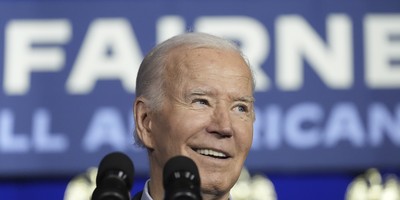Conservatives have complained of this for decades, with little effect. A slew of books over the past 25 years have exposed what goes on in the ivory towers, from Allan Bloom's treatise "The Closing of the American Mind" to Dinesh D'Souza's polemic "Illiberal Education." But none had provided a careful, in-depth study of a single school until the National Association of Scholars (NAS) this week released its 360-page report "What Does Bowdoin Teach?" (www.nas.org/projects/the_bowdoin_project).
Bowdoin College is a small private "liberal arts" school in Brunswick, Maine. Its admissions standards are demanding. Bowdoin accepts fewer than one in five who apply (though the school admits about a third of black and other "underrepresented" applicants to satisfy its commitment to "diversity"). The cost of tuition, room, board and fees for the school's roughly 1,800 students is hefty: $56,128 for the 2012-13 academic year, a sum that exceeds the annual income for half of all American households.
The school was founded in 1802 and boasts a distinguished cast of graduates, including Nathaniel Hawthorne, Henry Wadsworth Longfellow and U.S. President Franklin Pierce. But as the report's authors, Peter Wood and Michael Toscano, demonstrate, Bowdoin is not the school it once was. Nor does it provide the education, I venture, that most parents who send their children there believe they are getting, nor one most donors to the school's nearly $1 billion endowment would approve.
Recommended
Bowdoin requires all freshmen to take a first-year seminar, which is supposed to provide the gateway to the "critical thinking" skills the college purports to value. Among the 35 courses from which students must pick, easily half are either frivolous or, worse, tendentious exercises in identity politics. The titles alone tell the story: "Fan Fiction and Cult Classics," "Beyond Pocahontas: Native American Stereotypes," "Racism," "Fictions of Freedom," "Sexual Life of Colonialism," "Prostitutes in Modern Western Culture" and "Queer Gardens," to name a few. The latter course "examines the work of gay and lesbian gardeners and traces how marginal identities find expression in specific garden spaces." One can only infer that the college deems such knowledge a necessary building block to every student's intellectual development.
Wood and Toscano do more than catalogue the obvious excesses of the modern academy, however. Wood brings his training as an anthropologist to the examination of campus life and culture, painstakingly researching the college's records, including minutes of academic meetings, to reveal how Bowdoin's mission changed over the past 40 years. In a series of appendices and within the actual report, the authors document the decision-making process that has transformed Bowdoin into the school it is today.
The study also looks at the college's implicit promotion of sexual promiscuity and the "hook-up" culture among students, which begins during first-year orientation. A play called "Speak About It," which all incoming students must attend, includes what its authors say are autobiographical sketches from current and former Bowdoin students. The play depicts graphic on-stage sexual encounters between heterosexual and gay couples -- complete with simulated orgasms. Paradoxically, the Bowdoin community also seems obsessed with preventing sexual assault, which administrators seem to believe is rampant on campus despite the low incidence of reporting alleged attacks.
If Bowdoin were unique in its abandonment of traditional liberal education, this study might be of no more than passing interest. What the authors found at Bowdoin, however, exists to some degree at many if not most elite colleges and universities. This study deserves widespread dissemination and discussion -- first among Bowdoin's alumni, donors and the parents of current and potential students. But anyone interested in the future of higher education in America should take note.
Our colleges and universities shape the next generation of leaders and citizens, for better or worse. And the country's most elite schools will influence disproportionately who we become as a nation and a people in the future. What has happened to Bowdoin College should matter to all of us.
























Join the conversation as a VIP Member